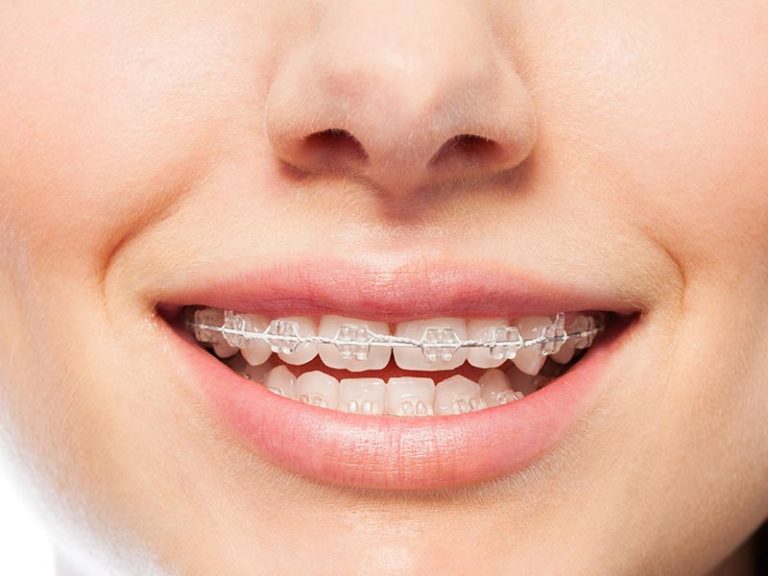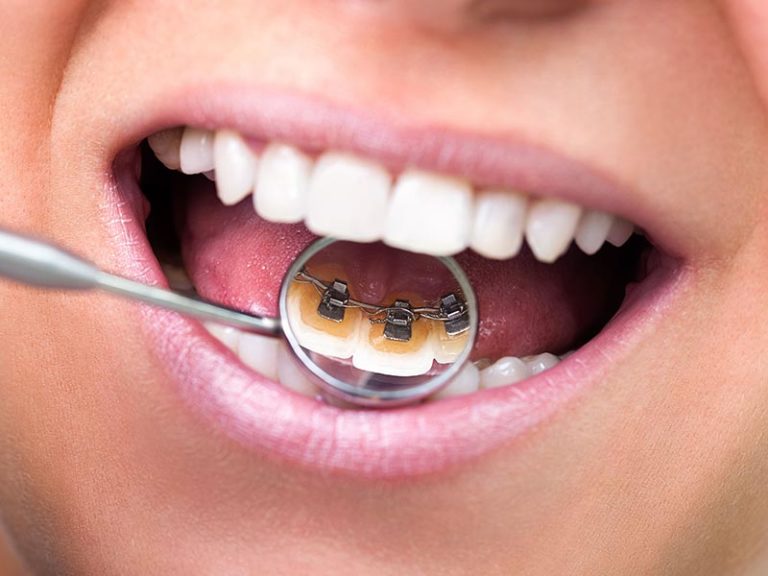What's it like to wear Braces?
Wearing Braces
There are three major types of braces: Traditional Braces, Invisible Braces and Invisalign. Here we explain what it’s like to wear braces.
Traditional Braces
These are braces that you wear along the front surface of your teeth with a series of brackets glued to each tooth and a wire connecting each bracket.
When your braces are first applied you will feel a mild discomfort for a few days. You won’t want to chew solid foods. This is completely normal and you’ll be able to minimise it with some paracetamol or ibuprofen.
Over the first week or two, the brackets that are attached to each tooth may rub on the inside of your lips and cheek. If you leave it untreated it may result in a small ulcer, but we’ll give you some wax that you can rub over the offending bracket to make it feel a lot smoother and prevent ulceration. If you need more wax you can buy it from a chemist or drop in to our practices and we can give you some more.
Over the course of 2 weeks your mouth will get used to the feeling of wearing braces and toughen up a bit, so rubbing against the brackets is unlikely to be a long-term issue.
What to expect when wearing Traditional Braces
Your tongue will want to run over your brackets and the archwire on your top row of teeth, because they are foreign. It won’t hurt to do that.
You may find that if you push your tongue too hard against one of the four bands that anchor your braces on your back molars, you can come into contact with the end of the archwire, and that can be sharp. But you really have to try to do that, so it won’t be an issue.
Eating while wearing Traditional Braces
You will have to change your diet a little bit – no more biting straight into apples, for example –because you will risk breaking off a bracket if you do. But you can still eat most things – you might just have to cut them up first.
Talking while wearing Traditional Braces
For the first few days, talking will be mildly discomforting. That’s because your tongue needs to press against your teeth to pronounce some sounds. Compensating for that discomfort may mean you talk more softly or the sounds of your speech change temporarily. Your braces won’t affect your speech at all once the initial discomfort wears off.
Depending on the colour choices you made before fitting, your braces may only be a little bit visible, or you may have chosen to decorate them and draw maximum attention to them. Either way, wearing braces is very common these days so we don’t think there will be any social awkwardness. Bring your friends and family on the journey with you and they’ll be very supportive.

Invisible Braces (also called Lingual Braces)
These are braces that are applied to the inside surface of the teeth . They work quite similarly to traditional braces but because they are on the inside of your teeth , they are very hard to see. Only your close friends and family will know that you have chosen to wear braces.
What to expect when wearing Invisible Braces
You’ll experience some initial discomfort when they are fitted and after each adjustment. But you can control that with ibuprofen or paracetamol.
You will find that your tongue sits less comfortably for the first week or so. That sensation will go away quickly once you adapt to sharing the space in your mouth with your new braces.
Over time, many patients find that they absent-mindedly run their tongue over the braces constantly, but there’s no long-term issue in doing that either.
When you smile, your teeth will appear completely untouched.
Your speech may be very mildly affected for a couple of days because your tongue needs to find its place again as you speak. But there won’t be a long-term change in that respect.

Invisalign
Invisalign is a system of clear plastic “aligners” that fit onto your teeth and gently move them into a new position over a period of 6-12 months, on average.
Only you will be able to tell that you’re wearing Invisalign. The aligners are crystal clear and very thin, so they fit your teeth perfectly.
When you smile, no-one will even know that you’re aligning your teeth. It will look completely natural.
What to expect when wearing an Invisalign Aligner
The product surface feels smooth inside your mouth and very comfortable.
The product has a close fit to your teeth though it adds a bit of height to your teeth. You will need a few days for your tongue adjust to this new height of your teeth as you speak. This may result in some faint lisping. But you’ll soon make the adjustment and go back to speaking clearly.
Unlike traditional or invisible braces, Invisalign doesn’t cause as much discomfort when you receive a new set of aligners. The process is very gentle on your teeth and gums.
You will need to take out your aligners when you eat, so you’ll have to decide whether to continue eating mid-morning or afternoon snacks between meals or switch to eating slightly larger meals to get you through.

Want to know more?
Click on the type of Braces you're interested in to find out more

Traditional braces
This is what most people have in mind when they think about braces. But there’s more than one style available. Clear or tooth-coloured brackets make the braces much less noticeable. Or you can opt for maximum visibility and choose from a wide colour palette to express your true personality.

Invisalign
The gold standard in invisible alignment treatment. The Invisalign system consists of a graduated series of clear plastic aligners that can be removed when you eat or for special occasions. You need to wear them for at least 22 hours a day to be effective, but if you want a beautiful smile without a hint of braces, Invisalign is for you.

Invisible Braces
Also called Lingual Braces. These work just like traditional braces worn on the front of the teeth, only they’re worn on the inside of your teeth , making them almost completely invisible. Only your close friends and family will know you’re having your smile adjusted.